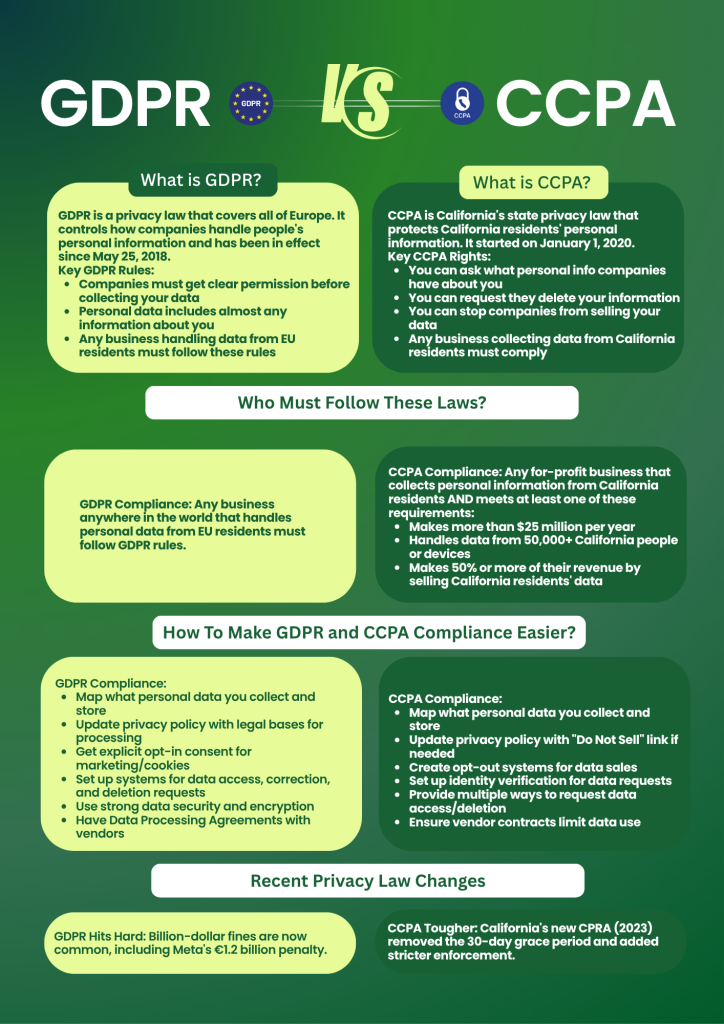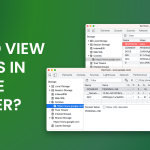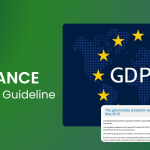If you run a business today, you’ve probably heard about data privacy laws like GDPR and CCPA. These laws have transformed how companies handle customer data, and breaking them can result in significant penalties. But what exactly are GDPR and CCPA, how are they different, and what steps do you need to take to comply? Let’s dive in!

What Are GDPR and CCPA Full Form?
GDPR stands for General Data Protection Regulation. It’s a comprehensive privacy law created by the European Union in 2016, enforced since May 2018, aimed at protecting personal data of EU residents. GDPR ensures that businesses handle personal data transparently, securely, and with clear user consent.
>>> Read more: GDPR Compliance in 2025: A Complete Guideline
CCPA stands for California Consumer Privacy Act. Passed by California in 2018 and effective from January 2020, CCPA was updated by the California Privacy Rights Act (CPRA) beginning January 2023. It empowers California residents by giving them specific rights over their personal information, such as the right to know what data is collected and to opt out of data sales.
Both laws share the goal of enhancing personal data protection, but they differ significantly in scope, requirements, and how they approach user consent and privacy rights.
The Difference Between GDPR and CCPA
If your business handles personal data, you’ve likely heard of GDPR and CCPA. These two major privacy laws protect people’s data rights, but they work in different ways. Understanding these differences is crucial for proper compliance.
Who Needs to Follow Each Law?
GDPR applies to you if you meet at least one of these conditions:
- Your business is in the EU.
- You offer products or services to people in the EU.
- You track the behavior of people in the EU.
- There’s no minimum size requirement – even small businesses must comply
CCPA applies to you if you meet all these conditions:
- You do business in California.
- You collect personal information from California residents.
- You meet at least one of these:
- Make over $25 million in yearly revenue
- Buy, receive, sell, or share data from 100,000+ California consumers or households per year
- Make 50% or more of your yearly revenue from selling Californians’ personal information
Non-profit organizations usually don’t have to follow CCPA, but they do need to follow GDPR if they handle EU residents’ data.
What Happens If You Don’t Follow These Laws?
The penalties for breaking these laws are quite different:
GDPR penalties:
- Enforced by data protection authorities in each EU country
- Fines up to €20 million or 4% of global yearly revenue, whichever is higher
- Some companies have faced fines in the hundreds of millions or even billions
- People can file complaints with the authorities
CCPA penalties:
- Enforced by the California Attorney General and the California Privacy Protection Agency
- Fines up to $2,500 per violation (if accidental) or $7,500 per violation (if intentional)
- People can sue companies directly if their data is breached due to poor security
- In those cases, damages can be $100-$750 per incident
While CCPA fines look smaller, they add up quickly because each privacy violation with each customer counts separately.
Actually, there are lessons from actual enforcement cases that help us understand what regulators care about:
- Sephora (CCPA violation, 2022):
Sephora was fined $1.2 million because it did not clearly tell customers it was “selling” their personal information through advertising and ignored user requests to stop using their data. - Amazon (GDPR violation, 2021):
Amazon received a huge fine (€746 million) for not getting clear permission from users before using their data for targeted advertising. This violated GDPR rules on consent and transparency. - Meta (GDPR violations):
Meta (formerly Facebook) was fined multiple times because it collected and used personal information for ads without clear permission from users in Europe, breaking GDPR rules. - UK Ticketing Company (GDPR violation):
A small ticketing company in the UK was fined after a hacker stole customer data. The company hadn’t protected the data properly, which violated GDPR’s security requirements.
These cases show that no company is too big or too small to face scrutiny.
How do People’s Rights Differ?
Both laws let people control their personal data, but GDPR gives broader rights.
Under GDPR, people can:
- Ask what data you have about them
- Fix incorrect information
- Delete their data (the “right to be forgotten”)
- Get a copy of their data in a usable format
- Stop certain uses of their data
- Object to automated decisions made about them
Under CCPA, people can:
- Find out what personal information you’ve collected
- Delete their personal information (with some exceptions)
- Stop you from selling their personal information
- Not be treated differently for using their rights
- Correct wrong information (added by CPRA)
- Limit the use of sensitive information like health data (added by CPRA)
The big difference here is how detailed these rights are and how easily people can use them.
Consent: Ask First or Opt Out Later?
One of the biggest differences between these laws is how they handle consent.
GDPR takes an “ask first” approach:
- You need a legal reason to use someone’s data
- For things like marketing or tracking cookies, you usually need clear permission first
- Permission must be freely given, specific, informed, and clear
- Users must take clear action to give consent (like checking an empty box)
- People can take back their consent anytime
CCPA takes an “opt-out later” approach:
- You can collect and use personal information without asking first
- But you must let people opt out of having their data sold
- You need a “Do Not Sell My Personal Information” link on your website
- You must honor browser privacy signals (like Global Privacy Control) as opt-out requests
This means under GDPR, you often need permission before collecting data, while under CCPA, you can collect data but must let people stop you from selling it.
GDPR and CCPA Compliance
Despite their differences, many compliance steps work for both laws. Here’s what to do:
Know Your Data
First, understand what personal data you collect, where it comes from, where it’s stored, and who you share it with. This “data mapping” helps you know if these laws apply to your business and forms the foundation for following them.
Ask yourself:
- What personal information do we collect?
- Where do we store it?
- Who has access to it?
- Who do we share it with?
- How long do we keep it?
Update Your Privacy Policy
Your privacy policy serves as the primary disclosure document where you communicate your data practices to users. So, your privacy policy should clearly explain:
- What data you collect
- How you use it
- Who you share it with
- What rights people have
- How they can use those rights
For CCPA, include a clear “Do Not Sell My Personal Information” link if needed. For GDPR, explain your legal bases for processing data and other required information.
Use plain language that people can easily understand – not legal jargon.
Create Ways for People to Use Their Rights
Both laws grant individuals specific rights over their personal data that businesses must honor. Make sure you set up systems to handle requests when people want to:
- See their data
- Fix their data
- Delete their data
- Opt out of data sales
Provide several ways for people to make these requests (web form, email, phone number) and train your team to handle them correctly.
For CCPA, you need ways to verify that the person requesting data is really who they claim to be.
Get Permission the Right Way (Especially for GDPR)
GDPR requires explicit, opt-in consent (active permission) for many processing activities, while CCPA follows an opt-out model. So, businesses must understand and implement the correct approach for each law. If GDPR applies to you:
- Use clear permission forms for marketing, cookies, etc.
- Use empty checkboxes that people must check themselves
- Keep records of when and how people gave permission
- For EU users, block non-essential cookies until they consent
For CCPA, focus on making it easy for people to opt-out and honoring those choices quickly.
Improve Your Data Security
Both laws expect you to protect personal data with reasonable security:
- Encrypt sensitive data
- Limit who can access what data
- Use firewalls and security monitoring
- Create a plan for handling data breaches
Good security not only helps follow these laws but reduces the risk of incidents that could lead to penalties or lawsuits.
Only Collect What You Need
Gather only the data you actually need and delete it when you’re done with it. Take a “less is more” approach:
- Only collect data you actually need
- Keep it only as long as necessary
- Create a schedule for deleting old data
Both laws favor this approach, and it limits your risk – data you don’t have can’t be stolen or misused.
Check Your Vendor Contracts
Your business remains responsible for data even after sharing it with vendors, so proper contracts prevent others from creating liability for you. If you share data with other companies:
- Under GDPR, have a Data Processing Agreement with specific terms
- Under CCPA, make sure contracts stop vendors from using data beyond what you’ve specified
- Review all vendor relationships to ensure they meet requirements
This is especially important for cloud services, marketing platforms, and analytics tools.
Keep Up with Changes
Privacy laws evolve quickly, and staying informed helps you avoid falling out of compliance with new requirements. Privacy laws keep evolving:
- CCPA was updated by CPRA
- Other states like Virginia, Colorado, and Utah now have similar laws
- GDPR interpretations change through court rulings and regulatory guidance
Stay informed about developments and adjust your privacy program as needed.
How To Make GDPR and CCPA Compliance Easier?
Meeting GDPR and CCPA rules can be complicated. Consentik can make it easy. As a Consent Management Platform (CMP) in the list of certified CMPs by the IAB Transparency and Consent Framework (TCF) 2.2 by the IAB Transparency and Consent Framework (TCF) 2.2, Consentik makes privacy compliance easy by simplifying GDPR, CCPA, and IAB TCF 2.2 rules. Since every business is different, it provides flexible consent management solutions to fit your needs.
Here are Consentik’s stand-out features:
- Clear Consent Management: Collect and safely store user consent clearly and easily.
- User-Friendly Choices: Allow users to choose exactly how their data is used, like for personalized ads or analytics.
- Easy Setup: Quickly create and customize consent banners and forms for your website or app.
- Detailed Records: Keep accurate records of user consent, making audits and compliance checks simple.
- Global Compliance: Consentik supports GDPR, CCPA, and other privacy laws worldwide, automatically updating as rules change.
Using Consentik helps your business easily follow privacy rules, earn user trust, and protect against privacy risks. Let’s try Consentik to see how easy privacy compliance can be!
GDPR and CCPA Recent Changes and Future Trends
Privacy law is constantly changing. Here are some important recent developments:
CCPA Updates (CPRA): The California Privacy Rights Act took effect in January 2023, adding new consumer rights, creating the California Privacy Protection Agency, and removing the 30-day “cure period” that gave businesses time to fix violations before being penalized. Enforcement began in July 2023.
Tougher GDPR Enforcement: EU regulators have gotten more aggressive, issuing billions in total fines. Big cases include Meta’s €1.2 billion fine for data transfer issues and penalties against various tech companies for inadequate permission practices.
More State Privacy Laws: Virginia, Colorado, Connecticut, Utah, and other states have created their own privacy laws. While each has unique elements, they generally borrow ideas from both CCPA and GDPR, creating a complex patchwork of requirements across the U.S.
Global Spread: Countries worldwide have adopted similar regulations, including Brazil, South Africa, and China. This trend toward stronger privacy protections continues to grow globally.
GDPR and CCPA FAQs
What is the equivalent of GDPR in the US?
The US has no direct federal equivalent to GDPR. Instead, data privacy is managed by multiple laws at federal and state levels, such as the California Consumer Privacy Act (CCPA), California Privacy Rights Act (CPRA), and other state-specific regulations, alongside sector-specific federal laws like HIPAA and COPPA.
What are the 7 main principles of GDPR?
Here are the 7 main principles of GDPR you must know:
- Lawfulness, Fairness, and Transparency
- Purpose Limitation
- Data Minimization
- Accuracy
- Storage Limitation
- Integrity and Confidentiality
- Accountability
Bottom Line
We’re seeing a worldwide shift toward stronger privacy protections, with GDPR and CCPA leading this change by giving people more control over their personal information. Smart businesses don’t view these laws as obstacles but as guardrails that help build better data practices. By understanding their key differences—who they protect, what rights they grant, how consent works, and the penalties they impose—you can create privacy policies that work for both regulations.
In an era where data breaches make headlines regularly, customers value companies that protect their information. Being transparent about your practices and giving people real control over their data builds trust and loyalty. Following these privacy laws not only helps you avoid fines but also creates a foundation for stronger customer relationships. In today’s digital economy, respecting privacy isn’t just compliance—it’s becoming a competitive advantage.












